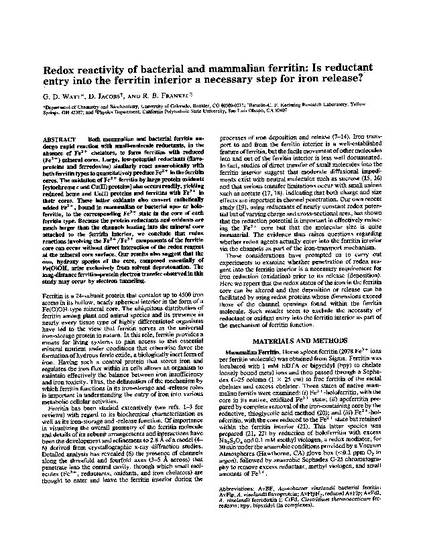
Both mammalian and bacterial ferritin undergo rapid reaction with small-molecule reductants, in the absence of Fe2+ chelators, to form ferritins with reduced (Fe2+) mineral cores. Large, low-potential reductants (flavoproteins and ferredoxins) similarly react anaerobically with both ferritin types to quantitatively produce Fe2+ in the ferritin cores. The oxidation of Fe2+ ferritin by large protein oxidants [cytochrome c and Cu(II) proteins] also occurs readily, yielding reduced heme and Cu(I) proteins and ferritins with Fe3+ in their cores. These latter oxidants also convert enthetically added Fe2+, bound in mammalian or bacterial apo- or holo-ferritin, to the corresponding Fe3+ state in the core of each ferritin type. Because the protein reductants and oxidants are much larger than the channels leading into the mineral core attached to the ferritin interior, we conclude that redox reactions involving the Fe2+/Fe3+> components of the ferritin core can occur without direct interaction of the redox reagent at the mineral core surface. Our results also suggest that the oxo, hydroxy species of the core, composed essentially of Fe(O)OH, arise exclusively from solvent deprotonation. The long-distance ferritin-protein electron transfer observed in this study may occur by electron tunneling.
Available at: http://works.bepress.com/rfrankel/14/
